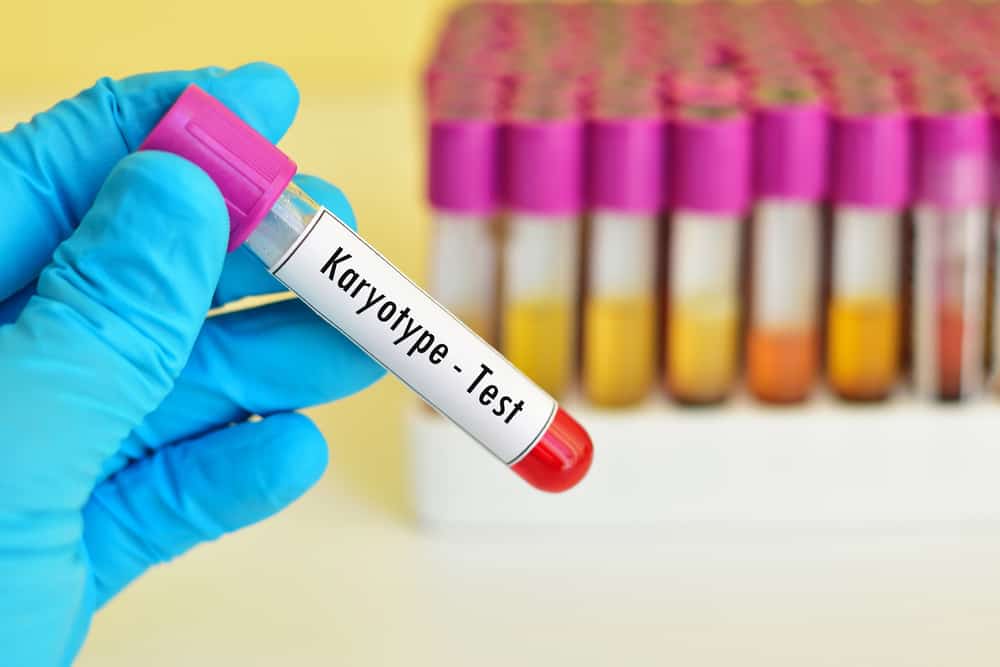Karyotyping
Karyotyping is the process by which photographs of chromosomes are taken in order to determine the chromosome complement of an individual, including the number of chromosomes and any abnormalities. The term is also used for the complete set of chromosomes in a species or in an individual organism and for a test that detects this complement or measures the number.
Karyotypes describe the chromosome count of an organism and what these chromosomes look like under a light microscope. Attention is paid to their length, the position of the centromeres, banding pattern, any differences between the sex chromosomes, and any other physical characteristics. The preparation and study of karyotypes is part of cytogenetics.
Karyotyping is performed on living cells such as blood lymphocytes or chorion villous cells or amniotic fluid cells. All these cells are collected, cultred, sained and then their chromosomes are photgraphed by microphotography or by diital photography. they are then arranged in a sequence and reported.
Some well known abnormalities in humans which cause disease are :
1. Turner syndrome results from a single X chromosome (45,X or 45,X0).
2. Klinefelter syndrome, the most common male chromosomal disease, otherwise known as 47, XXY, is caused by an extra X chromosome.
3. Edwards syndrome is caused by trisomy (three copies) of chromosome 18.
4. Down syndrome, a common chromosomal disease, is caused by trisomy of chromosome 21.
5. Patau syndrome is caused by trisomy of chromosome 13.
6. Trisomy 9, believed to be the 4th most common trisomy, has many long lived affected individuals but only in a form other than a full trisomy, such as trisomy 9p syndrome or mosaic trisomy 9. They often function quite well, but tend to have trouble with speech.
7. Also documented are trisomy 8 and trisomy 16, although they generally do not survive to birth.
Some disorders arise from loss of just a piece of one chromosomeare :
1. Cri du chat (cry of the cat), from a truncated short arm on chromosome 5. The name comes from the babies' distinctive cry, caused by abnormal formation of the larynx.
2. 1p36 Deletion syndrome, from the loss of part of the short arm of chromosome 1.
3. Angelman syndrome – 50% of cases have a segment of the long arm of chromosome 15 missing; a deletion of the maternal genes, example of imprinting disorder.
4. Prader - Willi syndrome – 50% of cases have a segment of the long arm of chromosome 15 missing; a deletion of the paternal genes, example of imprinting disorder.
5. Chromosomal abnormalities can also occur in cancerous cells of an otherwise genetically normal individual; one well-documented example is the Philadelphia chromosome, a translocation mutation commonly associated with chronic myelogenous leukemia and less often with acute lymphoblastic leukemia.
Test for adult karyotype can be done by collecting 5 ml heparinised blood 20ml of Amniotic fluid in sterile tube collected by Amniocentesis Chorionic villi in by CVS normal saline.



